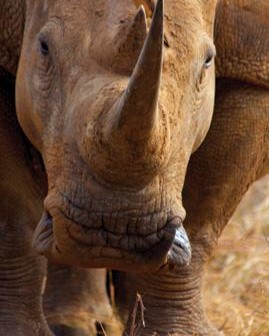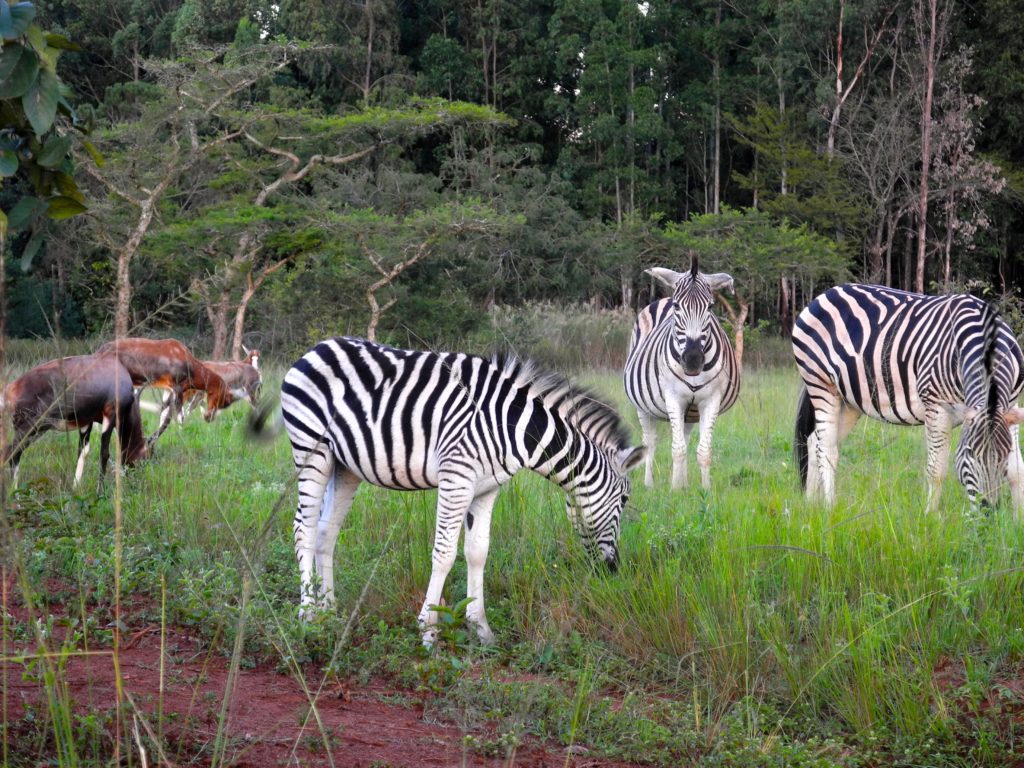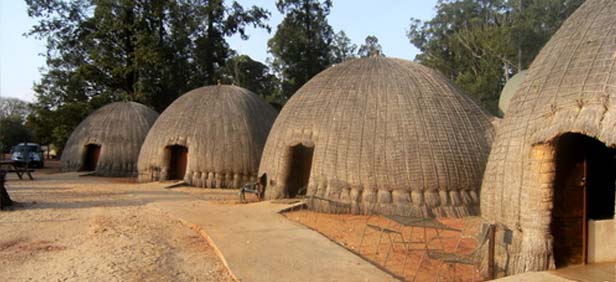- Belgium comes to Yamashita Park
- Residential Villa in Phuket Entices Remote Workers With Long-Stay Rates
- Rare pieces of French glass art at the Mirai Museum of Art
- Feast on fresh fish and seafood at the 2024 ‘Sakana’ Festival
- Would you like to ride in a Louis Vuitton gondola lift?
- Naked Snow Aquarium
- Festive lights at Yomiuriland will get you feeling the holiday vibes
Swaziland: Throwing caution to the wind

“Swazi tussle over virgin tassels,” read the BBC’s unforgettable headline. Absolute King selects teen-virgin bride from a bare-breasted dancing cast of thousands!
Slightly embarrassed to admit this, but that was my irresistible introduction to the itsy-bitsy Kingdom of Swaziland. Landlocked between South Africa and Mozambique, it also boasts wildlife reserves teeming with fanged and hungry beasts (the kids love ’em), towering mountains and verdant fields of sugarcane… well, the family just had to go!
We decided to fly direct to Johannesburg, hire a car, and make a road trip to Mbabane, the Swazi capital… a very civilized four hours of are-we-there-yet moments. It is a wonderful drive. Vast and barren winter plains detox the overcrowded city-dwelling soul. Achingly beautiful, the matchless antipodean sky stretches in endless indigo. The traffic is light and the roads are strong.
Corrugated iron and weatherboard shantytowns zoom past us on the road, pretty, multi-colored scars of poverty. In the dark days of apartheid, they were known as “locations.” I see my South African-raised husband visibly tense through these townships. He tells me that we would have been “asking for trouble” in days gone by, but now the only thing flapping violently in the breeze is laundry.
Nearing Swaziland, the yellow kikuyu grass landscape suddenly and dramatically transforms into pine forests and mountains. If Ukhozi 99.5 FM wasn’t belting out funky African beats (drowning out the children), we could be in Europe.
The dinky border post is a colorful place. Friendly and welcoming. So welcoming, in fact, that there are vending machines distributing “lubricated and colorless” condoms for free. This seems a somewhat presumptuous gesture until you remember the sad truth that an unbelievable 40% of the Swazi are infected with HIV.
Mlilwane Wildlife Sanctuary was our destination. The navigations from the border went well, under an hour. (Who says women can’t read maps?)
Mlilwane is the first nature conservation reserve to be set up in the Kingdom. Due to the pressures of hunting, agriculture, forestry, and pesticides, Swaziland’s once abundant wildlife had all but disappeared by the 1960s. Fortunately, a settler named Ted Reilly noticed what was going on and decided to turn his farm into a refuge for wild animals. With his own capital, he planted indigenous trees and created wetlands. He turned the exotic citrus into giraffe food, and the gum trees became fence posts and eagle nests. These days, it covers 4560ha.
So, still not really knowing what to expect, we turned off the tarmac onto a red dirt road. Paying a nominal entrance fee at the gate, (which is valid for the duration of your stay), we entered the park and ‘into the wild.’
 Zebras, buck, and wildebeest nonchalantly chew the grass as we creep excitedly past, observing the 40km speed limit. Crossing ‘crocodile-bridge,’ as we affectionately dubbed it, the children were scared into a stony wide-eyed silence. I could hear their imaginations churning into overdrive. Even I was glad to hear this park (except for crocs) contains none of Africa’s hungry carnivores.
Zebras, buck, and wildebeest nonchalantly chew the grass as we creep excitedly past, observing the 40km speed limit. Crossing ‘crocodile-bridge,’ as we affectionately dubbed it, the children were scared into a stony wide-eyed silence. I could hear their imaginations churning into overdrive. Even I was glad to hear this park (except for crocs) contains none of Africa’s hungry carnivores.
We paid ¥27,000 for three nights up front. (Strange.) We also ‘paid as we went’ in the restaurant, also slightly odd, but I guess the majority of the guests were prepaid through travel agents. In fact, with the exception of one other tourist (who, it turned out, was vaguely related to Ted), we were the only international tourists there.
The rooms were, in fact, traditional thatched Swazi huts, called ‘beehives.’ (The receptionist thought I was mad when I huffily told her I’d prefer not to park next to a beehive). They are grouped in a circle like a traditional village, and are fun, but quite basic and have zero sound insulation… slightly problematic for honeymooners and parents of noisy boys that wake up way too early. (Needless to say, we weren’t popular.)
Breakfast on the balcony of the Hippo Pool Restaurant was, for us, without question, the highlight of Mlilwane. As the sun rises, the murky, bubbling waters of the pond begin to steam. A dark form on the surface begins emerging through the vapors: there is a mummy and baby hippo! These little cuties are Africa’s most prolific killers of humans.
The evening buffet is a veritable feast for the gastronomically curious: springbok steak, gazelle curry, or wildebeest stew. There was also great variety for the kids and the vegetarians (like me), and traditional Swazi dancing some nights.
Our first day trip was to Piggs Peak to catch some spectacular mountain views, and visit the casino for lunch. A spontaneous diversion en-route led to the best discovery of the day. Following a sign to ‘San Bushman’ rock paintings, we found ourselves on a stunning mountain drive past colorful people, rural communities, and the Maguga dam. The turn off to the paintings found us on a steep and bumpy, red-dust trail. It took all my determination to convince my husband to drive far enough to find the place. He may not agree, but it was only 20 minutes from the main road.
The 40-minute round-trip trek to see the paintings, however, was a little unexpected. Daddy tried to stay behind to “watch the car,” but sadly for him, there was a security guard. Lucky for me, because I definitely couldn’t have juggled the rocky, challenging hike with two kids and my camera gear! A previous visitor summed it up succinctly under ‘Lost Items’: in the guest book, they wrote, “A few kilos!”
The images drew away what breath I had left. Painted with a mixture of Eland (huge buck of spiritual significance) blood and ochre. The ancient paintings have been protected since ancient times by a rock over-hang that provides a natural shield from the elements. Also iron (red pigment in the ochre) does not oxidize past rust. The passive San Bushmen were driven to remote areas like the Kalahari by the newcomers of the day: the Swazi tribe.
The next day, we headed to Mlilwane’s sister sanctuary, Hlane, to see the lions and elephants. In theory, the drive should take 85 minutes. Unfortunately, my husband noticed a rickety sign saying “Hlane,” pointing to a dirt track. It made “rock-painting road” look like a formula-one raceway. Every ounce of female intuition I possess screamed, “GO BACK!” Sadly, I was the only one listening. A nail-biting hour-down-a-lonely-dark-road later, passing nothing but mud huts (suddenly they weren’t so pretty) and subsistence farms, sugar plantations and massive trucks, there was no sign of a wildlife reserve. No sign of hope, and I started to get scared. This felt like… AFRICA!
Then a miracle happened: my husband, a man, agreed to stop and ask for directions. The clouds opened. A beautiful girl dressed in white said, “No matter how lost you might feel, you are not,” and gave us directions that got us there in 10 minutes.
Naturally, we’d missed the animals; they prefer mornings. Anyway, it turned out kids under six aren’t allowed to go on the safari tours! (We were having a great day.) We drove our car into the bush and immediately literally ran into a couple of (thank God they were) White Rhino; the black ones are mean. The good news is that they didn’t charge at us, and I got some great photos. Time to call it a day!
We didn’t see our Swazi lions, but we left Swaziland with our hearts just full. The small, silly things I realized are also the best things. It is a wonderful place, untouched by mass tourism. All I can say is: get there before it changes!
FACT FILE
WEATHER
Winters are dry and mild, but with cold nights. Summers are warm and rainy, but temperatures are not excessively high. The low humidity and number of sunshine hours make for a pleasant climate.
CAR HIRE
All the usual players. 4×4 is best–reserve well in advance.
AIRPORT
Matsapha Airport has flights from Johannesburg.
CURRENCY
Lilangeni (SZL). Pegged exactly to South African Rand, which can also be used.
LANGUAGE
Everybody speaks fabulous English.
SHOPPING
Masks, candles, baskets, wooden bowls, drums dolls.
POLITICS
One of the world’s last remaining absolute monarchies. King Mswati III has said, “Swaziland is not yet ready for multi-party politics.”
ECONOMY
Many Swazis live in chronic poverty. Food shortages are widespread. They rely heavily on South Africa, which receives almost half of Swazi exports and supplies most of its imports.
SAFETY TIPS
CITIES
The central areas of the large cities (e.g. Johannesburg) have a criminal element! Walk with a group. Be on the look-out for pickpockets and bag snatchers. Do not carry more cash than required. Do not wear jewelry. Wear a money belt that fits under your clothes. Don’t carry a lot of camera equipment, especially in the major cities. Keep a photocopy of the first few pages of your passport, visas, and air tickets, separately from the original documents. Beware of thieves posing as police officers.
DRIVING
In Africa, drive carefully. Remember that animals and humans can cross the road at any time (quite often just in front of you). Try never to drive at night. If you are renting a car, keep the doors and windows locked while driving in the major cities.
Car-jacking occurs fairly regularly but may not end in violence as long as you comply with demands made.
SAFARI
Always listen to your guide! Do not walk into the bush without your guide! Do not approach any wild animals; it is dangerous! Do not swim in any rivers! (Water = crocodiles + hippos!)















